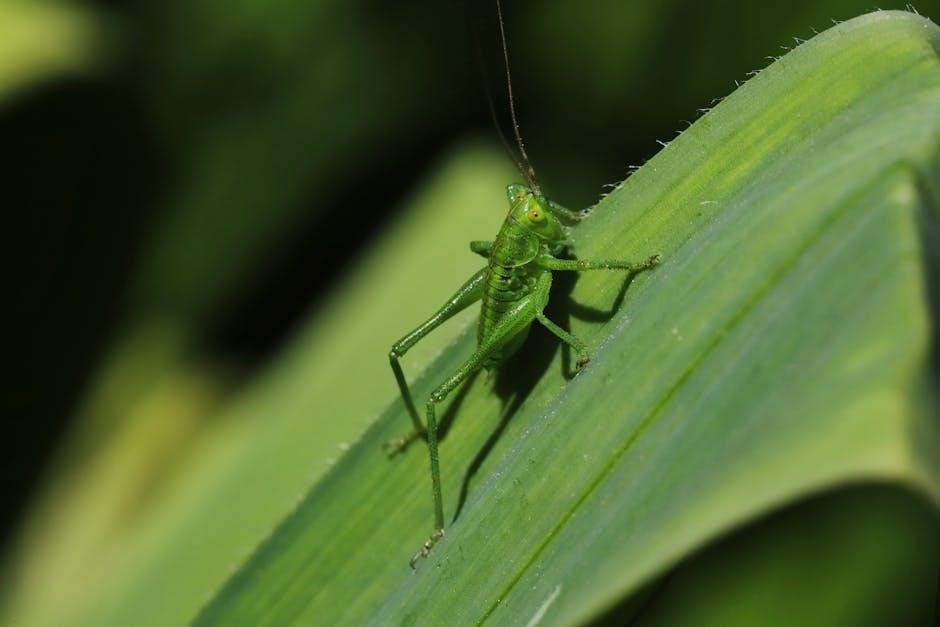
Zone 6 offers a moderate climate with a growing season of about 150-175 days. Understanding frost dates and microclimates is key to successful gardening in this region.
1.1 Understanding USDA Hardiness Zones
USDA Hardiness Zones divide the U.S. into regions based on average minimum winter temperatures. Zone 6 has temperatures ranging from -10°F to 0°F (-23°C to -18°C). This classification helps gardeners select plants suited to their local climate, ensuring they can thrive in the area’s weather conditions.
1.2 Key Characteristics of Zone 6 Climate
Zone 6 has a moderate climate with warm summers and cold winters. The growing season typically lasts 150-175 days, with first frost in late September and last frost in early April. This allows for planting cool-season crops in spring and fall, and warm-season crops in summer, making it versatile for gardeners.
1.3 Importance of Local Microclimates
Local microclimates significantly influence Zone 6 gardening. Variations in temperature, soil, and wind patterns can create conditions differing from broader climate zones. Understanding microclimates helps optimize planting strategies, as they may extend or shorten growing seasons locally. Inspecting your garden’s unique conditions ensures tailored decisions for better plant performance and resilience.

Frost Dates and Growing Season in Zone 6
Zone 6 has a growing season of approximately 150-175 days. First frost typically occurs between September 30 and October 30, with the last frost around March 30 to April 30.
2.1 Average First and Last Frost Dates
In Zone 6, the average first frost date ranges from September 30 to October 30, while the last frost date typically falls between March 30 and April 30. These dates are crucial for planning planting schedules to avoid damage to tender plants from early or late frosts.
2.2 Determining Frost Dates for Your Area
Frost dates in Zone 6 vary slightly by location due to microclimates. Check local nurseries, weather services, or the USDA Plant Hardiness Zone Map for precise dates. Your area’s specific conditions, like elevation or proximity to bodies of water, can shift frost dates by a week or more, so verify for accuracy;
2.3 Average Growing Season Duration
Zone 6 has an average growing season of 150-175 days, typically from mid-April to mid-October. This moderate climate supports a wide variety of plants, including both cool-season and warm-season crops. Most vegetables mature successfully before the first frost, making Zone 6 ideal for diverse gardening.
Soil Preparation for Zone 6 Gardens
Proper soil preparation is crucial for a thriving Zone 6 garden. Test and adjust soil pH, amend with organic matter, and use compost and mulch to enhance fertility and drainage.
3.1 Testing and Adjusting Soil pH
Testing soil pH is essential for Zone 6 gardens. Most plants thrive in slightly acidic to neutral soil (6.0–7.0). If pH is too low, add lime; if too high, use elemental sulfur or peat moss. Regular testing ensures optimal conditions and promotes healthy plant growth each season for better yields.
3.2 Amending Soil for Optimal Growth
Amending soil with compost, well-rotted manure, or peat moss enhances fertility and drainage. Mulching retains moisture and suppresses weeds. Incorporate organic matter annually to improve soil structure and promote beneficial microbial activity. Avoid monoculture practices and maintain diversity to ensure a balanced ecosystem, fostering healthy root development and robust plant growth in Zone 6 gardens.
3.3 Benefits of Compost and Mulch
Compost enriches soil with nutrients, improves drainage, and supports microbial life, while mulch retains moisture and suppresses weeds. Together, they create a fertile, stable environment for plants. Regular application promotes healthy root development and increases crop yield, ensuring resilient and thriving Zone 6 gardens throughout the growing season.

Planting Times by Month in Zone 6
March: Start seeds indoors for tomatoes and peppers. Early spring: Plant spinach, lettuce, and peas. Summer: Sow beans, squash, and watermelon. Fall: Replant broccoli and kale.
4.1 Spring Planting (March-May)
March: Begin with cool-season crops like spinach, lettuce, and radishes. Early April: Direct-sow beets, carrots, and peas. Late April: Plant broccoli, cabbage, and onions. May: Transition to warm-season crops, planting beans, zucchini, and tomatoes after the last frost date, typically around May 15 in Zone 6.
4.2 Summer Planting (June-August)
In Zone 6, summer planting focuses on warm-season crops. June is ideal for direct-sowing seeds like beans, corn, and squash. July allows for planting heat-tolerant varieties such as okra and southern peas. By August, gardeners can sow a second round of summer squash or start fall crops like pumpkins and winter squash. Regular watering and mulching are essential for success.
4.3 Fall and Winter Planting (September-February)
In Zone 6, fall and winter planting focuses on cool-season crops. Broccoli, kale, and spinach thrive in cooler temperatures, while Brussels sprouts and garlic can be planted in early fall. These crops tolerate light frosts, making them ideal for the region. Planting in September or early October ensures a robust harvest before winter. Using cold frames or mulch can extend the growing season.

Best Vegetables to Grow in Zone 6
Zone 6 supports a wide variety of vegetables, including broccoli, spinach, carrots, and Brussels sprouts. These crops thrive in the region’s moderate climate and extended growing season.
5.1 Cool-Season Crops
Cool-season crops like broccoli, spinach, and carrots excel in Zone 6’s temperate spring and fall. Plant them 4-6 weeks before the last frost for an early harvest or wait until late summer for a fall crop. These crops prefer cooler temperatures, ensuring robust growth and flavorful yields in the region’s climate.
5.2 Warm-Season Crops
Warm-season crops such as tomatoes, peppers, and zucchini thrive in Zone 6’s summer heat. Plant them after the last frost date, typically late May, to ensure optimal growth. These crops require full sun and well-drained soil to produce abundant harvests, making them ideal for the region’s extended warm weather period.
5.3 Winter Vegetables
Winter vegetables like spinach, kale, and Brussels sprouts excel in Zone 6’s cooler months. Plant these hardy crops in late summer or early fall, about 8 weeks before the first frost. They tolerate light frosts and continue to grow during mild winters, providing fresh harvests well into the colder season.

Tips for Successful Gardening in Zone 6
Maximize your Zone 6 garden’s potential by using compost, mulching regularly, and diversifying plants. Companion planting, crop rotation, and vertical gardening also boost productivity and soil health naturally.
6.1 Companion Planting
Companion planting enhances growth by pairing vegetables with beneficial flowers or herbs. For example, planting marigolds with tomatoes deters pests, while basil improves flavor. This method optimizes space, reduces pests, and promotes healthy growth, making it a simple yet effective strategy for Zone 6 gardeners to boost their harvests naturally and efficiently.
6.2 Crop Rotation
Crop rotation is essential for maintaining soil health and preventing pests. Rotate plant families annually to replenish nutrients and avoid depleting the soil. For example, follow leafy greens with root vegetables to balance nutrient uptake. This practice also breaks pest and disease cycles, ensuring a more resilient and productive garden in Zone 6.
6.3 Vertical Gardening
Vertical gardening maximizes space and improves air circulation, ideal for Zone 6. Use trellises, arbors, or wall-mounted systems to grow vining plants like tomatoes, peas, and cucumbers. This method enhances productivity and reduces soil erosion. Incorporate compost-rich soil for healthy root development and enjoy a bountiful harvest in a compact setup.
Common Challenges and Solutions
Pests, diseases, and weather extremes are common issues in Zone 6. Use organic pest control, practice crop rotation, and protect plants with mulch or shade during intense weather.
7.1 Dealing with Pests
In Zone 6, pests like aphids, slugs, and snails can damage plants. Use natural deterrents such as neem oil, garlic spray, or soap solutions; Companion planting with marigolds or basil can repel pests. Encourage beneficial insects like ladybugs and lacewings to maintain a balanced ecosystem. Regularly inspect plants and remove infested areas promptly to prevent spread.
7.2 Managing Diseases
Prevent plant diseases in Zone 6 by maintaining healthy soil and practicing good hygiene. Remove infected plants promptly and avoid overhead watering. Crop rotation and proper spacing improve air circulation, reducing fungal risks. Test soil pH regularly and amend if necessary. Compost naturally suppresses pathogens, while organic fungicides can be used as a last resort.
7.3 Addressing Weather Extremes
Zone 6 gardeners must adapt to weather extremes like unpredictable frosts, heavy rains, and heatwaves. Use row covers or cold frames to protect plants from frost. Improve soil drainage to handle heavy rainfall; During heatwaves, provide shade for sensitive plants and maintain consistent watering to prevent stress. Mulch helps retain moisture and regulate soil temperature.
Planting Schedule Chart
A detailed chart outlining the best times to plant vegetables in Zone 6, covering sowing, transplanting, and harvesting timelines for optimal growth throughout the 150-175 day growing season.
8.1 Month-by-Month Planting Guide
Zone 6 gardeners can plant cool-season crops like lettuce and peas in March, start seeds indoors for tomatoes and peppers in April, and transplant warm-season crops in May. Summer months focus on continuous planting of beans, squash, and herbs. Fall brings opportunities for broccoli, kale, and root vegetables, while winter allows for garlic and spinach.
8.2 Harvesting Timelines
In Zone 6, harvesting timelines vary by crop. Cool-season crops like spinach and lettuce are ready in April-May, while tomatoes and peppers mature in July-August. Root vegetables like carrots and beets are harvested in late summer, and winter crops like kale and spinach can be picked in early spring. Plan for a 150-175 day growing season.
Expert Tips and Resources
Consult local nurseries for specific advice and utilize online planting charts for Zone 6. Soil testing and proper tools enhance success. Start seeds indoors and use companion planting for better yields.
9.1 Advice from Experienced Gardeners
Experienced gardeners recommend starting seeds indoors 4-6 weeks before the last frost date. Use compost and mulch to enrich soil, and consider vertical gardening for space efficiency. Rotate crops annually to maintain soil health and prevent pests. Check local frost dates and microclimates to optimize planting times for Zone 6.
9.2 Recommended Tools and Resources
Essential tools for Zone 6 gardening include soil testing kits, garden planners, and seed starting trays. Use grow lights for indoor seedlings and invest in durable gardening gloves. Online resources like planting charts and frost date calculators are invaluable. Compost, mulch, and kneeling pads also enhance your gardening experience and success.
Zone 6 gardening offers a rewarding experience with its moderate climate. By following this guide, you can maximize your growing season and enjoy a bountiful harvest successfully.
10.1 Final Tips for Zone 6 Gardeners
Always consider frost dates, soil health, and microclimates. Start seeds indoors for tomatoes and peppers. Use compost and mulch to enrich soil. Diversify crops to avoid monoculture. Vertical gardening boosts space efficiency. Monitor weather extremes and pests; Happy gardening in Zone 6!
10.2 Encouragement for Beginners
Embrace gardening in Zone 6 with confidence! Start small, learn your soil, and enjoy the journey. Begin with hardy crops like lettuce or peas. Don’t be afraid to ask for advice or experiment. Every harvest, no matter how small, is a victory. Happy growing!